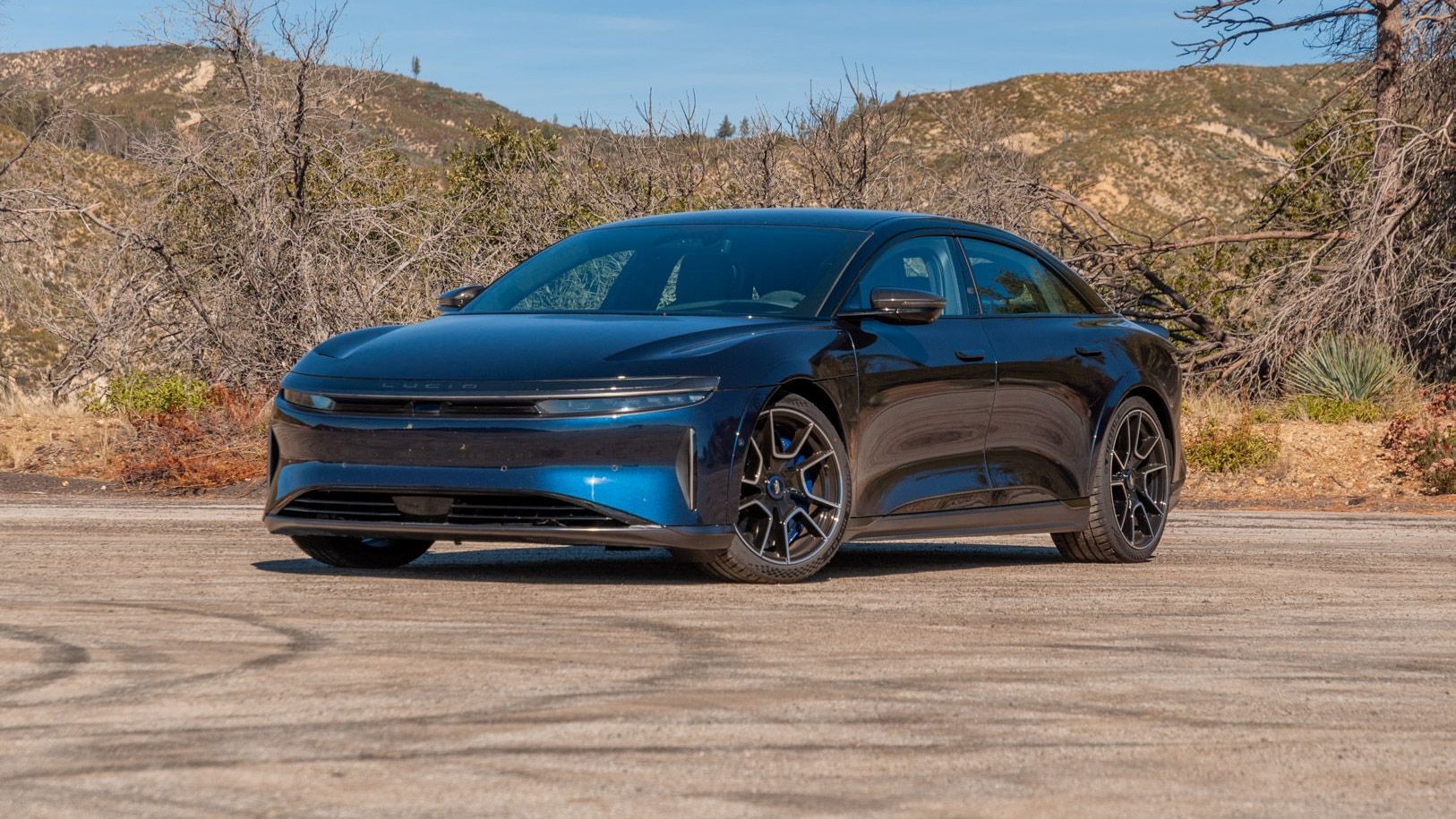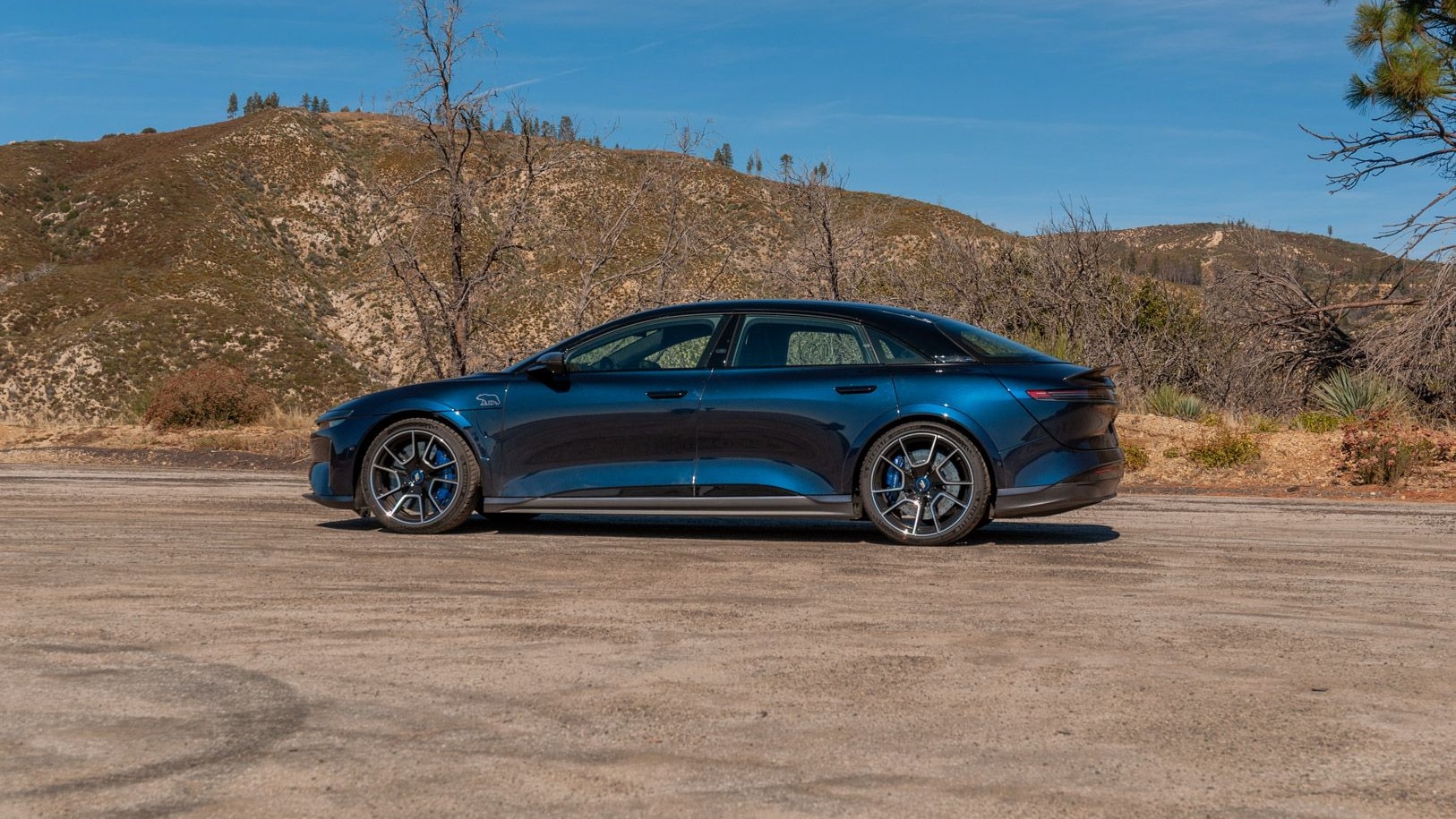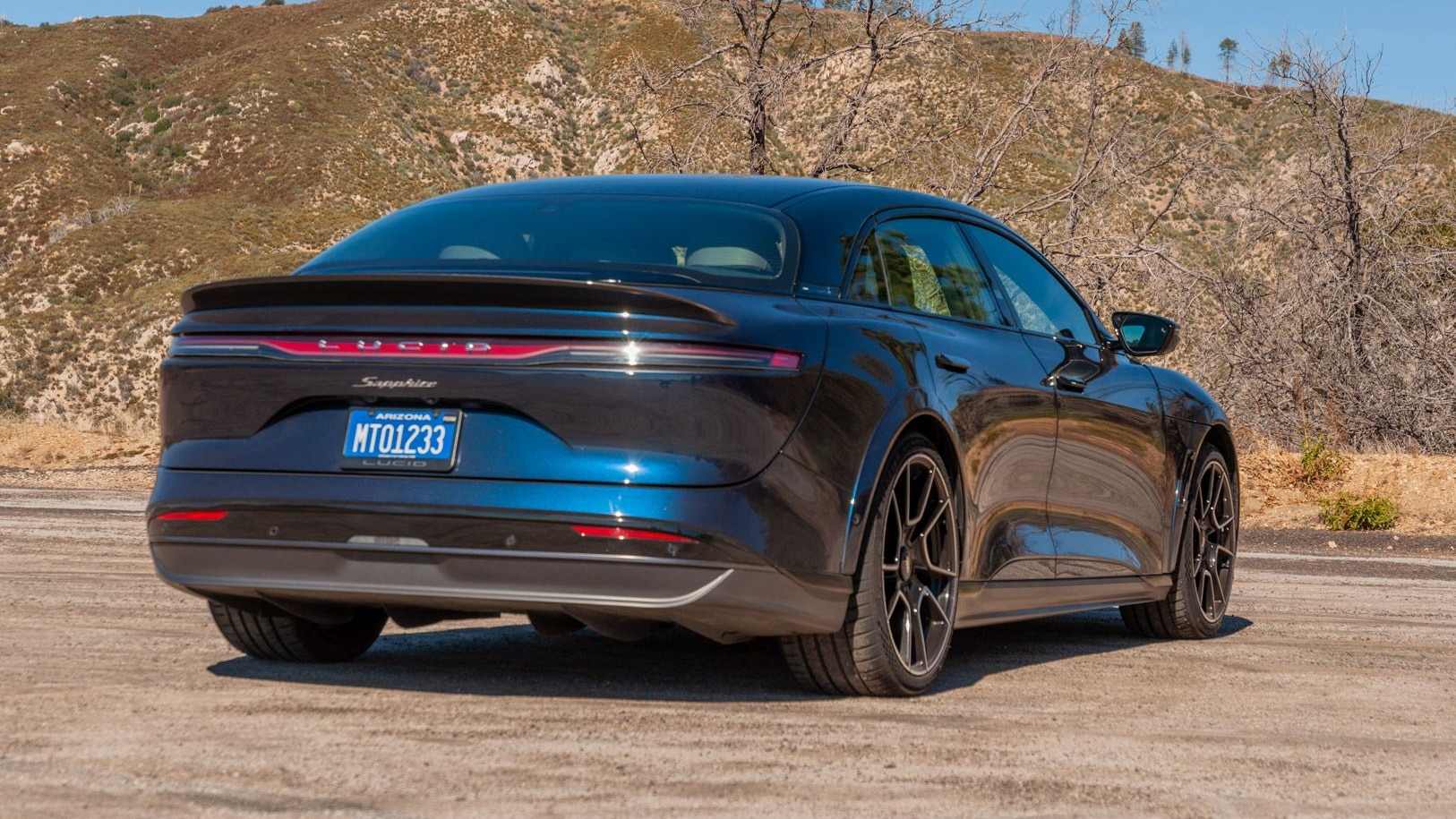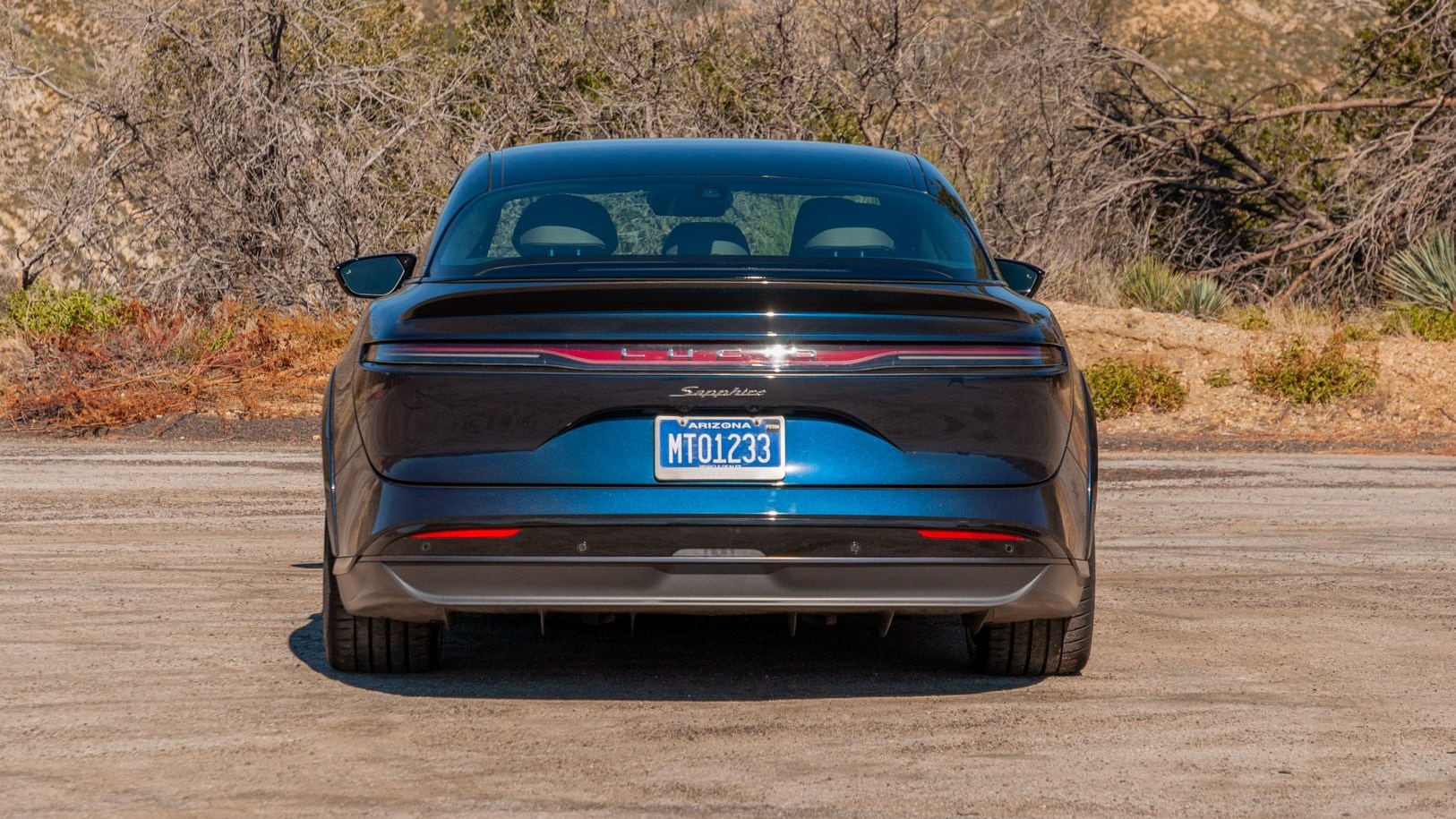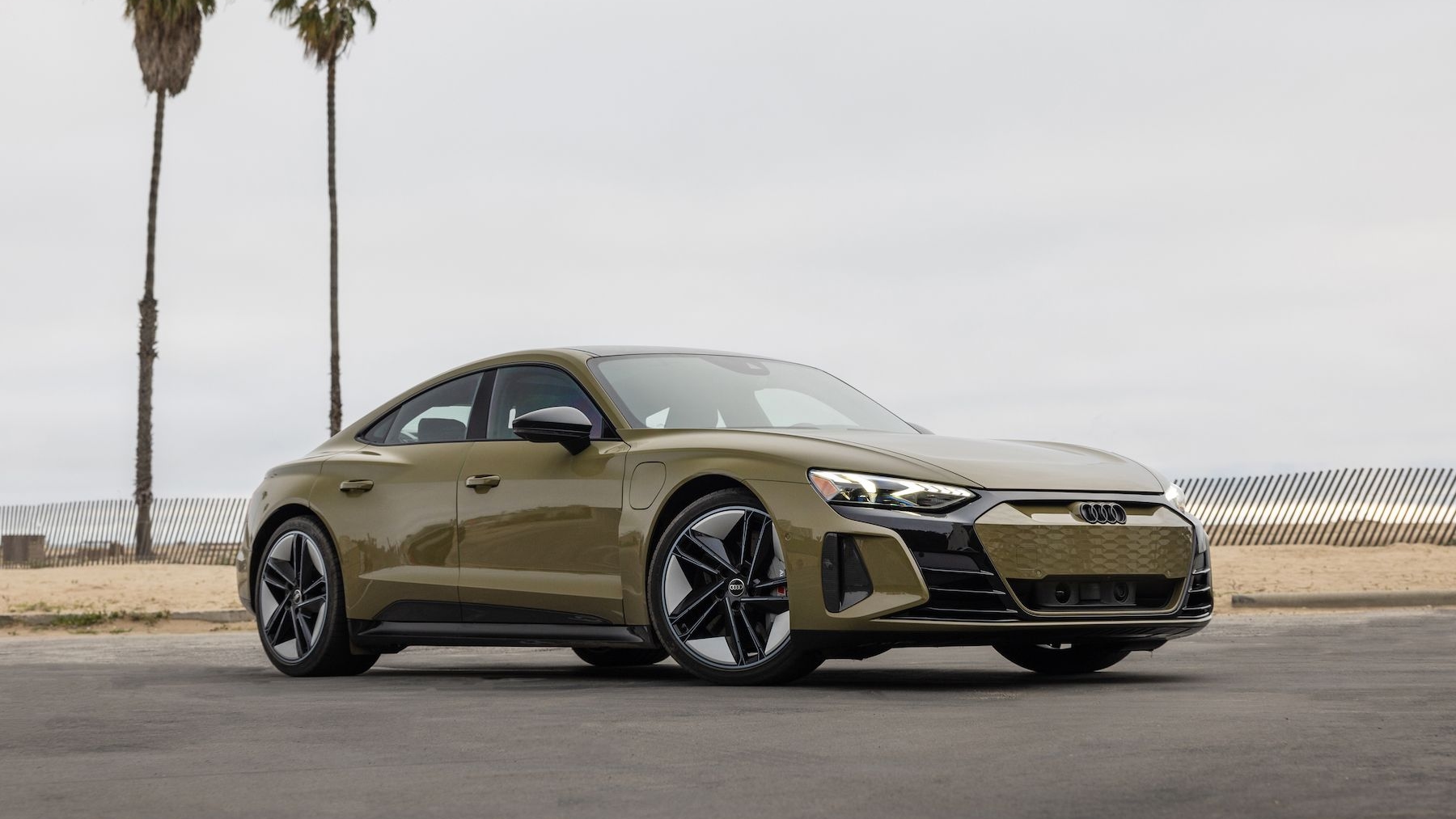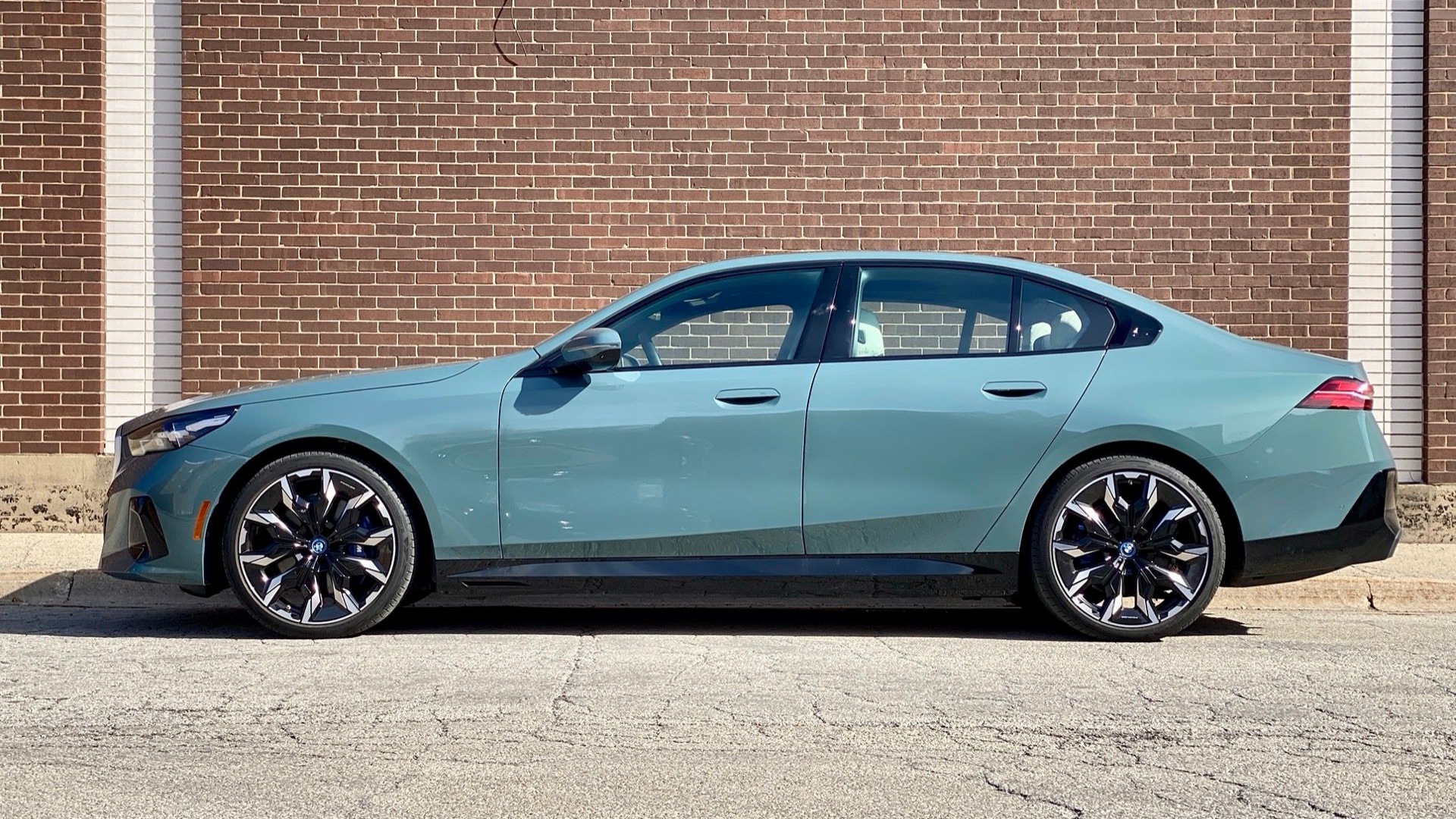Electric cars have strengths and weaknesses. Electric motors can provide a lot of power, but weight is a problem, and that’s a detriment to handling, especially for a sport sedan.
And yet, Lucid has not only created a great electric sport sedan, but a sport sedan benchmark—gas or electric—with the 2024 Air Sapphire.
Lucid tossed Senior Editor Kirk Bell and I the key to an Air Sapphire for a few days in Los Angeles after fate conspired against us in the final days leading up to Motor Authority Best Car To Buy 2024 testing. We wrote off the Sapphire as a nominee going into the competition because it wasn’t available to drive at the track, but the car proved to be so damn good on Angeles Crest Highway that we had no choice but to walk that back and include it as a finalist.
Lucid Air Sapphire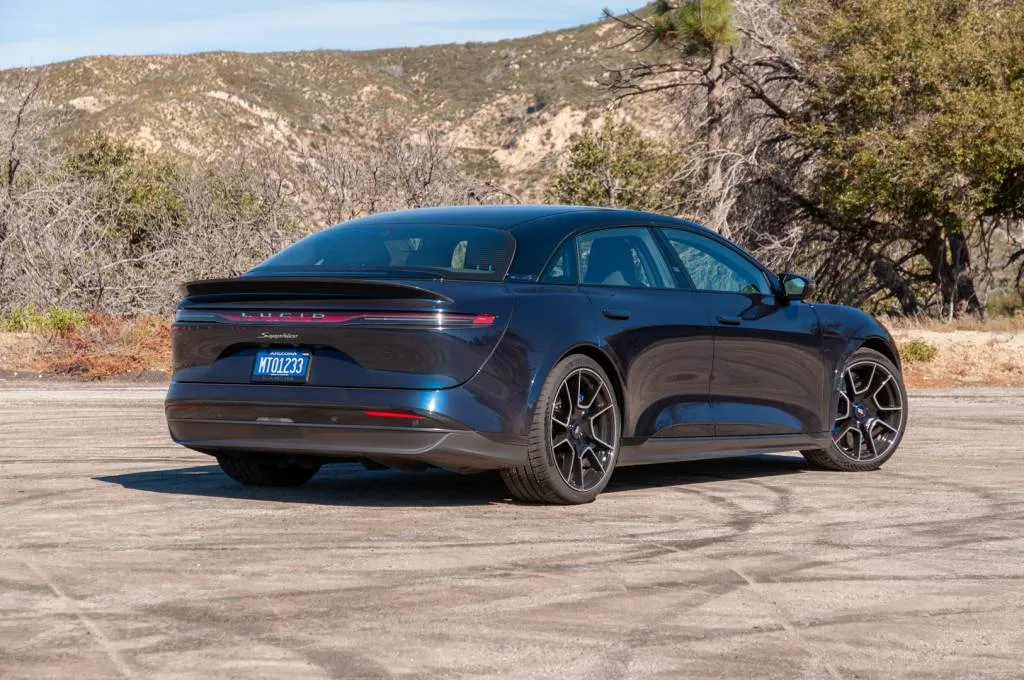
Lucid Air Sapphire heaps on excessive power
The Air Sapphire is the quickest production sedan money can buy. It conquers the 0-60 mph sprint in 1.9 seconds, 0-100 mph in 3.8 seconds, and the quarter mile in 9.0 seconds at 158 mph, and it has a top speed of 205 mph. That’s ludicrous on paper, and even wilder in reality.
It’s so fast because of its three-motor electric drivetrain that is rated at a total output of 1,234 hp and 1,430 lb-ft of torque. That’s less than the maximum possible output of 2,010 hp as each motor is capable of up to 670 hp. Lucid only runs each motor at about two-thirds output, or roughly 411 hp—and only in the right mode—to ensure the 118-kwh battery pack still delivers an EPA-rated 427 miles of range.
Like other Lucids the Sapphire has three drive modes—Smooth, Swift, and Sapphire. It adds a fourth, Track, which has three sub-modes of its own. In Smooth and Swift modes the powertrain puts out 767 hp. Sapphire cranks output to 1,121 hp. Track mode gives drivers a choice of Drag Strip mode at the full 1,234 hp, Hot Lap at 1,003 hp, and Endurance at 767 hp. Each of the sub-modes conditions the powertrain for the intended type of driving.
Flashback to 2021 when the Air launched and the Dream Edition offered a Performance grade with 1,111 hp. That car had a dual motor powertrain, which required each motor to work harder than the Sapphire's three motors, and it did 0-60 mph in “only” 2.5 seconds, which now seems slow.
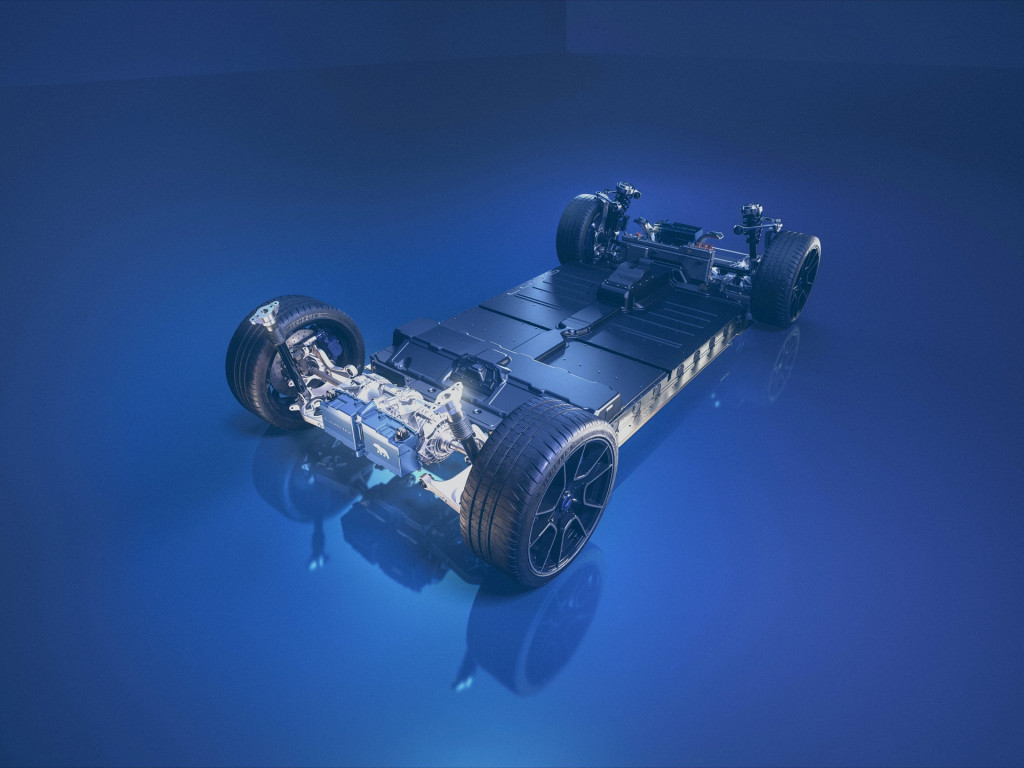
Lucid Air Sapphire
Lucid Senior Director of Vehicle Dynamics and Chassis Engineering, David Lickfold, told Motor Authority the Sapphire features the latest evolution of Lucid’s electric motors. According to Wulfer de Bruijn, Senior Manager of Efficiency, Performance, and Systems at Lucid, the updates to those motors make them generate less heat and enable them to better redirect the heat into the cooling fluid. This makes the motors more efficient. A new coolant pump and oil cooler for the electric motors help keep things cool during high-performance track driving. A newly added heat pump also helps reduce strain on the battery by conditioning the cabin up to mild ambient temperatures.
Lickfold said that Sapphire’s development was mostly done at Thunderhill Raceway on the 3.0-mile East track. There, the Sapphire can do about two laps at 9- or 10/10ths pace in the 1,003-hp Hot Lap mode, which chills the powertrain for a single high-power lap before the powertrain will begin to throttle down the power. Running the car in the 767-hp Endurance mode will enable four or five laps at 9- or 10/10ths, and then if the driver backs off a little, the car will be able to recover and keep going, according to Lickfold. Once the powertrain gets too hot, Lickfold says it will take 60-80 minutes plugged into a fast charger for the system to cool down and fully charge before the car is ready to get back on the track. A 20-minute session at full tilt, and especially multiple sessions, remains a challenge, even for a quarter-million-dollar car.
Intoxicating power can scare the hell out of an unsuspecting passenger or even the driver. Merging onto Highway 101 Kirk warned me this was an insane amount of power. I mashed the accelerator pedal to the floor anyway, slamming both of us into our seat backs and applying pressure to our chests. “Holy hell,” I said. Kirk just laughed. The power hits harder than in any car I’ve ever driven. Passengers should beware.
Cruising along the highway headed toward Angeles Crest the Air cruised like any other Lucid to date. It rode a bit firmer than lesser Airs on its Michelin Pilot Sport 4S summer tires, but it was quiet, and still lined with leather and suede. It still sports a curved 34-inch screen atop the dashboard augmented by the retractable 12.3-inch touchscreen, a hard volume roller knob, and climate control toggles.
However, it lacks the glass roof of other high-end Airs I’ve driven. After a model lineup reshuffling for 2024 every Air now comes standard with a metal roof, and the glass roof is now a $4,000 option on Touring and Grand Touring models. The metal roof is lighter, removing mass from the highest point of the vehicle to aid handling. It also makes the car quieter on the highway, inducing less cabin boom. Most importantly, the metal roof blocks the sun, so the climate control system doesn’t have to work as hard and waste energy.

2024 Lucid Air Sapphire
Lucid Air Sapphire carves corners
The power output and performance specs make great headlines, but the true mark of a sport sedan is the ability to go around a corner. Electric cars are heavy, and the Air Sapphire is no lightweight at 5,336 pounds, but it handles with the best sport sedans.
As I snaked up the road stitching one corner with another I was shocked at how much raw speed the Sapphire carried around the corners. Like other Air models, the Sapphire lacks a fancy air suspension and goes about its business with coil springs and a solenoid-controlled semi-active set of dampers. The key is deft suspension tuning.
To handle the extra power and remain composed, Lucid stiffens just about everything part of the Air’s suspension. The Bilstein dampers have been retuned, the springs are 17% stiffer up front and 25% stiffer in the rear, the rear anti-roll bar is 27% stiffer, and the bushings are 25% stiffer up front and 28% stiffer in the rear. The electric power steering’s been retuned with a fast 13.0:1 ratio.
Lucid also dialed in an additional degree of camber up front via a new knuckle and a half-degree in the rear via a new control arm.
Through corner after corner, the steering had a little heft that felt appropriate, and a natural feel that telegraphed what was happening at the wheels through the suede-wrapped steering wheel. The same pavement that unsettled the Honda Civic Type R in Race mode a year ago failed to upset the much heavier, much faster Air Sapphire a year later during the very same Best Car To Buy testing. The ride was firm, but not too firm, in any of the dampers’ three settings associated with the three main drive modes.
Kirk and I threw the Sapphire into the corners, but we were only willing to push things so far on public roads. Try as we might, it was difficult to truly discern what the torque vectoring and stability control were doing. Once, maybe twice, I thought I could feel the power move side to side but it happened in the background and felt natural. The car has two motors on the rear axle, and it uses positive and negative motor torque to help the car turn without the need for mechanical clutches. Like the rest of the Sapphire, the torque vectoring is well tuned.
All that power wasn't a problem in corners, where it could come on too hard and disrupt the balance if it weren't well controlled. Lucid has addressed this, too, tuning the otherwise immediate torque of the electric motors to phase in gradually, making the car stable and unflappable mid-corner.
2024 Lucid Air Sapphire
The Sapphire’s upgraded aerodynamics also aid handling, though that’s also hard to feel and pays off mostly at higher speeds. The exterior changes are subtle. The front splitter and rear diffuser are larger and jut out farther than on lesser Airs. Strakes are added to the underbody panels, and they increase downforce while simultaneously reducing drag, according to Lucid. The trunk lid spoiler is larger and adds a full Gurney flap that contributes 70% of the car’s total downforce.
Sapphires come with wheel covers that add range for daily driving and increase high-speed stability, but our test car wasn’t fitted with them. Removing the covers helps improve brake cooling. That’s a key element of this car, because we hammered those brakes.
Time and time again we ramped up the Sapphire to warp speed before hammering on the brakes to slow things down from a blur. The standard carbon-ceramic system features huge 10-piston front calipers and 4-piston rear calipers that grab pizza-sized 16.5-inch front and 15.3-inch rear rotors. Despite hours of hamfisted driving, the brakes never faded or even smoked. This car is heavy and can create a lot of speed. Appropriately, it has a lot of brakes to control that speed.
Lucid Air Sapphire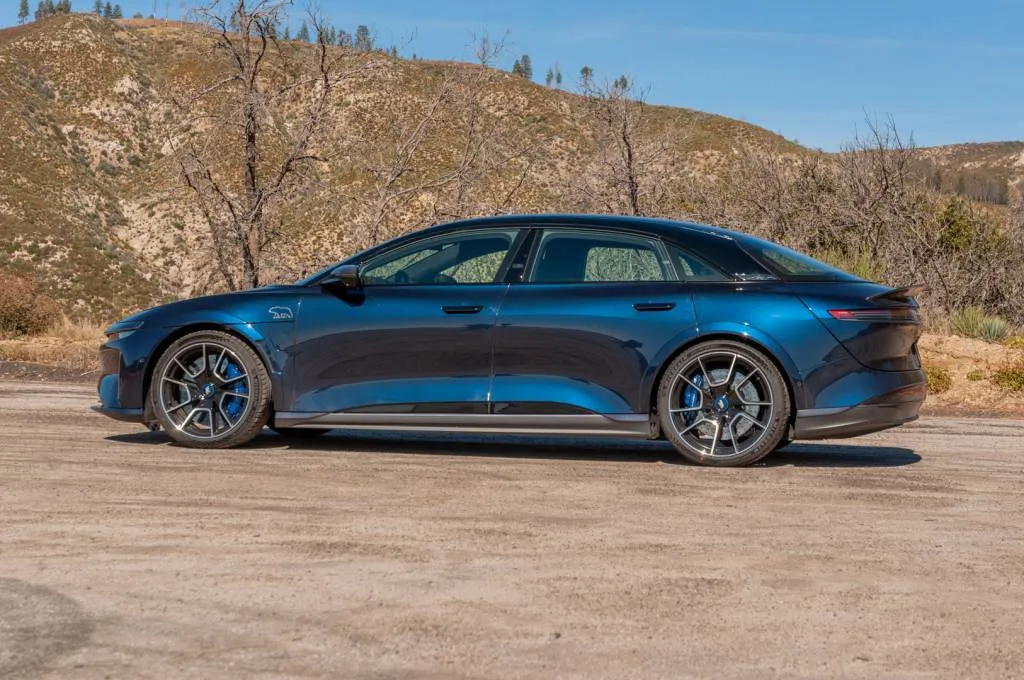
Lucid Air Sapphire comes at a supercar cost
The Air’s sleek roofline is unchanged, and that means getting in can be a chore. I whacked my head on the A-pillar when I first slid into the driver’s seat. The touchscreen’s software was slick and lag free this time around, but the car’s sensors still couldn’t decide if they should lock or unlock the car when we went to lunch. Nor did it immediately recognize the proximity key upon returning to the car two separate times.
The biggest issue with the Air Sapphire is its price. At $250,500 including destination, it’s uber expensive. That is true exotic car territory where Ferraris, Lamborghinis, and McLarens live. The Sapphire is not any of those cars, and doesn’t seem like it fits in that rarefied air. If this car cost $150,000 we’d call it a steal, or at least fair. At $180,000, it might seem expensive but justified. The Tesla Model S Plaid can seem half-baked without the $15,000 carbon-ceramic brake package, but it starts at $90,000, has almost as much power, and runs just $106,380 with those brakes. The Air Sapphire is better appointed, more agile around a corner, and a little quicker, but a properly equipped Plaid costs less than half as much.
On the other hand, the Air Sapphire is faster than any supercar, at least in a straight line, and it holds up well in corners. Whether anyone needs a car that goes from 0-60 mph in 1.9 seconds without some sort of special driver’s license is a different debate altogether, but nobody needs a supercar either.
For those with the means, this is the fastest sport sedan on the market and one of the best handling, too, despite its excess weight and lack of a gas engine. The future is now, and it’s silent, expensive, and fast as hell.
—with additional reporting by Kirk Bell
